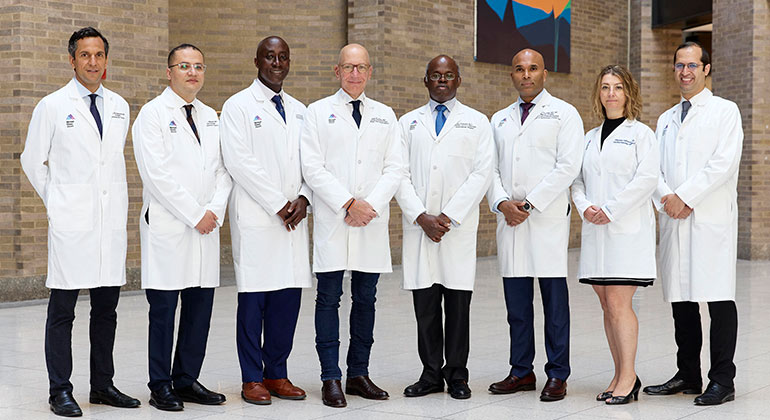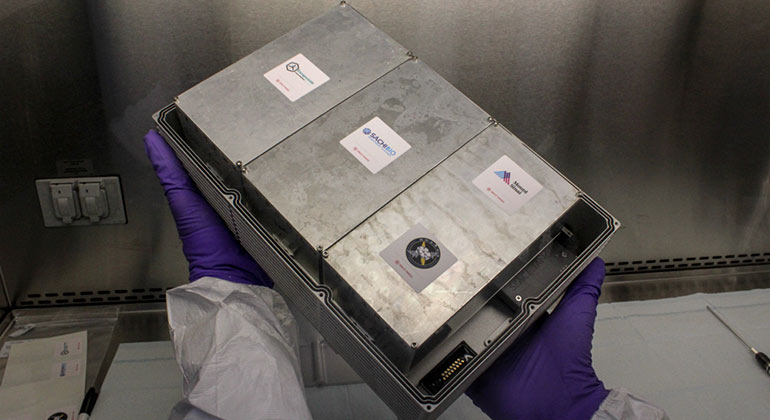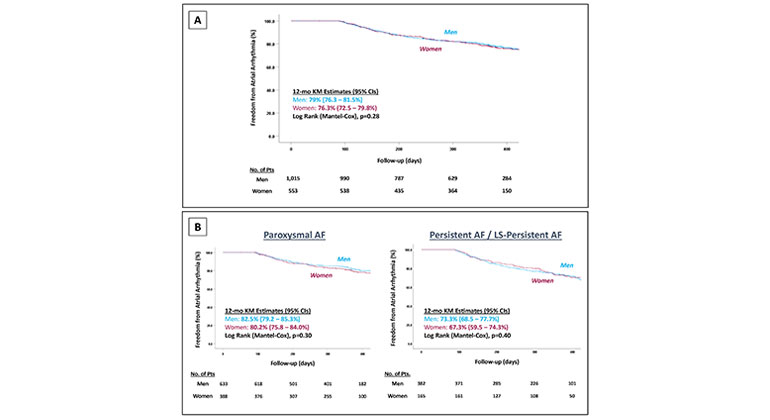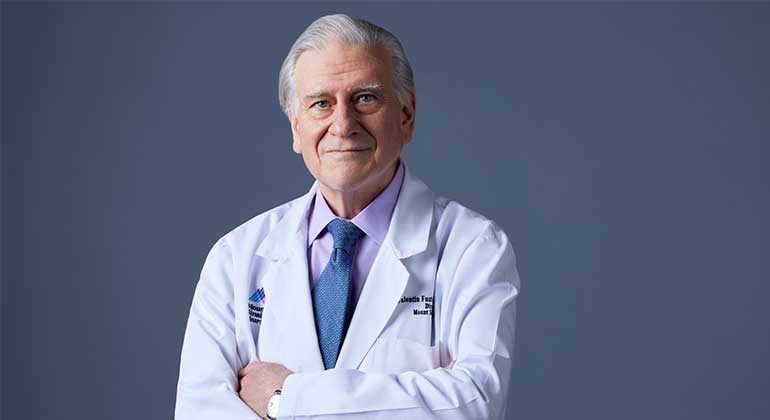New Classification System for Cardiomyopathy
Mount Sinai Hospital’s cardiologists contribute to the creation of newly proposed MOGE(S) Classification System for cardiomyopathy disorders.
Leading cardiologists at The Mount Sinai Hospital have contributed to the development of a new classification system called MOGE(S) for cardiomyopathies, the diseases of the heart muscle which can lead to heart enlargement and heart failure.
The new cardiomyopathy classification system was published simultaneously on November 18 by the Journal of the American College of Cardiology (JACC) and Global Heart, the journal of the World Heart Federation. The Mount Sinai Hospital co-authors include: Valentin Fuster, MD, PhD, Director of Mount Sinai Heart and Physician-in-Chief at The Mount Sinai Hospital; Sean Pinney, MD, Director of the Advanced Heart Failure and Transplantation Program at The Mount Sinai Hospital and Jagat Narula, MD, PhD, Director of Cardiovascular Imaging Program at The Mount Sinai Hospital.
The document endorsed by the World Heart Federation is a result of the monumental effort of a 17-member international committee of widely acclaimed investigators (including cardiologists, geneticists, pathologists and imagers). The committee was chaired by Dr. Narula, who also led the development of the classification system.
MOGE(S) classification system and its easy-to-use online web application tool for physicians: MOGE(S) can assist in the diagnosis and management of each individual cardiomyopathy patient by helping to classify his or her following five cardiomyopathic disorder attributes including:
- Morphofunctional characteristic, or observable clinical traits
- Organ involvement
- Genetic inheritance pattern
- Etiological, or explicit genetic defect cause
- Stage of heart failure (optional)
The new system uses a more comprehensive, descriptive nomenclature to explain each individual patient's cardiomyopathy using a configuration of letters as a descriptive language or code to reveal additional details instantly for the medical community to understand exactly what type of cardiomyopathy disorder and genetic mutations a patient has.
"This new MOGE(S) code for each patient will allow for clearer and greater understanding of a patient's cardiomyopathy, easier communication among physicians, and even help us develop multicenter and multinational registries for more future research into cardiomyopathies," says Dr. Jagat Narula, who also serves as Professor of Medicine and Associate Dean for Global Health, Philip J. and Harriet L. Goodhart Chair in Cardiology at Icahn School of Medicine at Mount Sinai.
"The new MOGE(S) classification system will allow us to begin diagnosing early cardiomyopathy better, where disease is not present but genetic information and advanced cardiac imaging shows evidence of increased risk of developing the condition, which will fuel clinical decision making for prevention of cardiomyopathy," adds Dr. Narula.
Also, an easy-to-use web application for MOGE(S) can be used on a computer, mobile phone, or other electronic device by medical professionals in daily clinical practice for a descriptive and comprehensive classification of a patient's individual cardiomyopathy type, here.
"MOGE(S) will allow us to now communicate better about cardiomyopathy across the fields of cardiology and heart failure," says Dr. Sean Pinney, Director of the Advanced Heart Failure and Transplantation Program at The Mount Sinai Hospital.
The authors of the new MOGE(S) classification system also propose an updated definition of "cardiomyopathy" to be "disorders characterized by the morphologically and functionally abnormal myocardium in the absence of any other disease that is sufficient, by itself, to cause the observed phenotype."
Most cardiomyopathies are genetic diseases. In recent years there has been a substantial increase in the knowledge of the genetic basis of cardiomyopathy. To date, more than 60 genes have been identified and linked to cardiomyopathy while genetic testing has helped characterize the various types of cardiomyopathies in patients.
"Increased family screening and monitoring has revealed that cardiomyopathies serve a long preclinical existence before symptoms or clinical presentation of the disease surfaces," says Dr. Valentin Fuster, the Editor-in-Chief elect of the Journal of the American College of Cardiology (JACC), who also serves as Director of the Zena and Michael A. Wiener Cardiovascular Institute and the Marie-Josée and Henry R. Kravis Center for Cardiovascular Health at The Mount Sinai Hospital, and the Richard Gorlin, MD/Heart Research Foundation Professor at Icahn School of Medicine at Mount Sinai. "Our new MOGE(S) system was inspired by the universally accepted TNM staging system for malignant tumors which allows for a common language and code to be used across the oncology community."
The authors note, as new scientific discoveries about cardiomyopathies evolve, so will in parallel the alphabetical components of the MOGE(S) classification system.
"We have made the MOGE(S) classification quite flexible and expandable. We hope classification, quite like the TNM staging will be continuously updated to include future advances, will help contribute to the better management of heart muscle diseases, and will allow better communication with a common language among the scientists working in the field of cardiomyopathic disorders," says Dr. Narula.
About the Mount Sinai Health System
Mount Sinai Health System is one of the largest academic medical systems in the New York metro area, with more than 43,000 employees working across eight hospitals, over 400 outpatient practices, nearly 300 labs, a school of nursing, and a leading school of medicine and graduate education. Mount Sinai advances health for all people, everywhere, by taking on the most complex health care challenges of our time — discovering and applying new scientific learning and knowledge; developing safer, more effective treatments; educating the next generation of medical leaders and innovators; and supporting local communities by delivering high-quality care to all who need it.
Through the integration of its hospitals, labs, and schools, Mount Sinai offers comprehensive health care solutions from birth through geriatrics, leveraging innovative approaches such as artificial intelligence and informatics while keeping patients’ medical and emotional needs at the center of all treatment. The Health System includes approximately 7,300 primary and specialty care physicians; 13 joint-venture outpatient surgery centers throughout the five boroughs of New York City, Westchester, Long Island, and Florida; and more than 30 affiliated community health centers. We are consistently ranked by U.S. News & World Report's Best Hospitals, receiving high "Honor Roll" status, and are highly ranked: No. 1 in Geriatrics and top 20 in Cardiology/Heart Surgery, Diabetes/Endocrinology, Gastroenterology/GI Surgery, Neurology/Neurosurgery, Orthopedics, Pulmonology/Lung Surgery, Rehabilitation, and Urology. New York Eye and Ear Infirmary of Mount Sinai is ranked No. 12 in Ophthalmology. U.S. News & World Report’s “Best Children’s Hospitals” ranks Mount Sinai Kravis Children's Hospital among the country’s best in several pediatric specialties.
For more information, visit https://www.mountsinai.org or find Mount Sinai on Facebook, Twitter and YouTube.

Inter-Atrial Shunts May Benefit Some Heart Failure Patients While Harming Others
Apr 06, 2024 View All Press Releases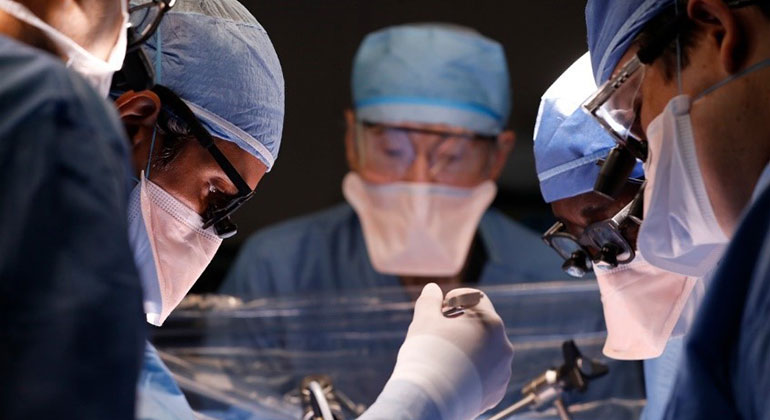
Ismail El-Hamamsy, MD, PhD, Named President of the Heart Valve Society
Feb 22, 2024 View All Press Releases

